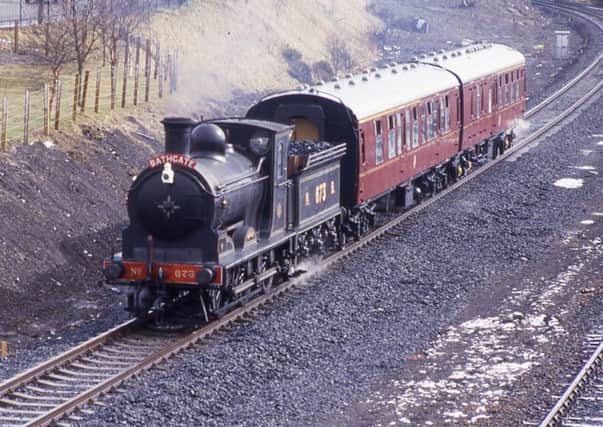Bo'ness steam train Maude on iconic list


The North British Railway 0-6-0 no. 673, known as Maude, is a steam locomotive which has been named on a list of 25 “fascinating objects” after playing an important part in supporting the British Army in 1915.
It is housed in the Museum of Scottish Railways at Bo’ness and Kinneil Railway.
Advertisement
Hide AdAdvertisement
Hide AdAlso featured on the list are Sir Walter’s Scott Desk, a Roman distance slab, the oldest football and Dolly the Sheep.
Built in 1891 the train was used to transport troops and supplies to the Western Front during the First World War.
And it is one of the few preserved 0-6-0s (numbers which refer to the layout of its wheel arrangement) to have been approved for mainline work in the UK.
Along with the slab from the Antonine Wall, Maude is among the objects to feature in new e-book The History of Scotland in 25 objects.
Advertisement
Hide AdAdvertisement
Hide AdJulia Stephen, director at the museum, said: “We’re delighted to have Maude included, giving this iconic steam locomotive recognition.
“Maude has a long history of pulling freight trains on Scottish railways as well as her experiences in France during the First World War.”
Compiled by an expert panel for the 2017 Year of History, Heritage and Archaeology, the artefacts listed cover over 5000 years of Scottish history and feature objects from the length and breadth of the country, from Shetland to Dumfries and Galloway.
Items were selected based on the chronological and geographical spread alongside their individual stories.
Advertisement
Hide AdAdvertisement
Hide AdVisitScotland hopes that visitors will go on a trail this summer to discover as many objects as possible and in turn find out more about Scotland’s fascinating past.
Distance slabs, known as Legionary stones, recorded the length of the wall completed by the legions working on the Antonine Wall, which stretches from near Bo’ness to Old Kilpatrick on the west coast. Built around 142-160AD, the Wall is a UNESCO World Heritage Site.
Liz Buchanan, regional partnerships director at VisitScotland, said: “Falkirk has a fascinating past and it’s fitting that the area is represented by two of the treasures on this list of objects, which we think speaks for Scotland’s rich and colourful history.”
Scotland’s History in 25 Objects is available to download at http://ebooks.visitscotland.com/25-objects/.